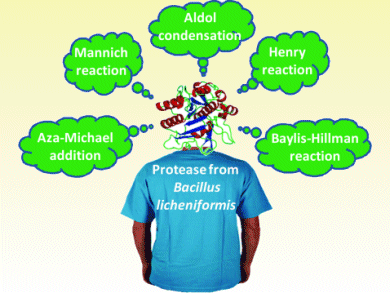The use of biocatalysts, both as enzymes and also engineered whole cells, in the manufacture of chemicals offers major advantages in terms of enhanced reaction selectivity, reduced cost of raw materials, lower energy costs, improved safety and sustainability of production. In the pharmaceutical industry, chemical processes for drug manufacture are being replaced by biotechnology-based approaches. The future is likely to see further uptake of biocatalysts especially if the process development times can be reduced.
Several classes of enzymes, such as lipases, esterases, nitrilases, ketoreductases, and aldolases, have reached the point where they are now used on a fairly routine basis. The next challenge for the biocatalysis community is to broaden the range of the biocatalysis toolbox and attention is now turning to other hydrolytic enzymes, e.g., dehalogenases, and those for C—C and C—N bond construction, e.g., lyases and ammonia lyases, respectively.
The current issue of Advanced Synthesis and Catalysis (ASC) is dedicated to biocatalysis and has been guest edited by ASC Board Members Wolf-Dieter Fessner (left), Technical University Darmstadt, Germany, Nicholas Turner (center), University of Manchester, UK, and Mei-Xiang Wang (right), Beijing National Laboratory for Molecular Sciences, China.

Professor Fessner works in the fields of enzyme catalyzed asymmetric synthesis and synthesis of carbohydrates and mimetics. Professor Turner is Director of the Centre of Excellence in Biocatalysis at the University of Manchester, where he investigates enzymes for organic synthesis. Professor Wang’s research interests include enantioselective biotransformations of nitriles and amides using whole cell catalysts.
Images: © Wiley-VCH




